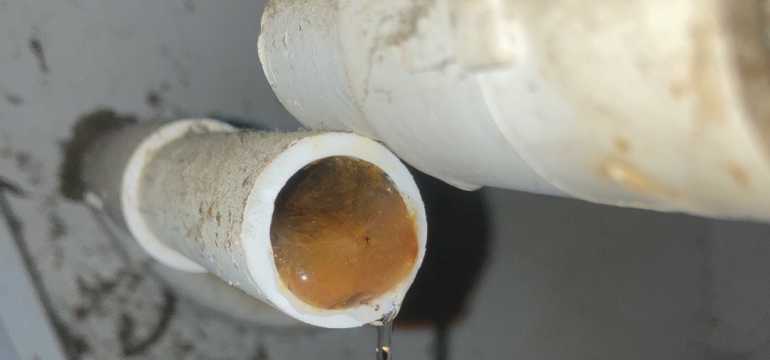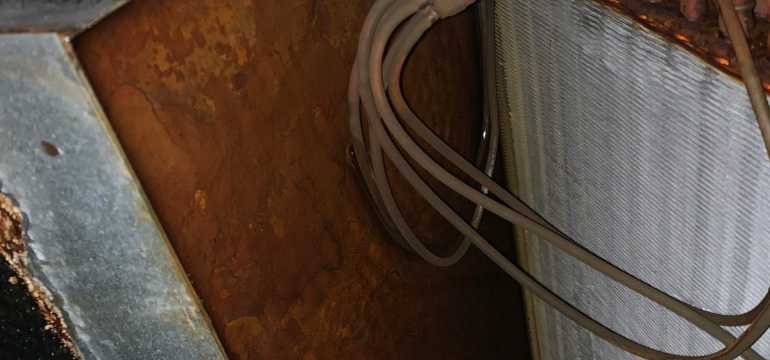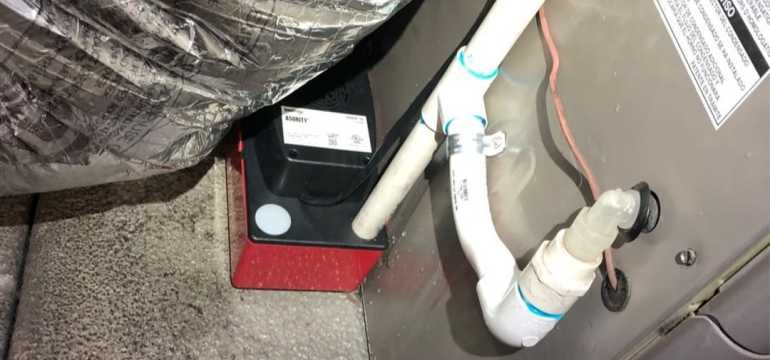Is your furnace leaking water when the AC is on? If so, there’s a high chance that your AC drain pipe is the same one that your furnace uses. This creates a situation in which your furnace will leak when there’s something wrong with the AC drain pipe.
The good news is that this is usually caused by a clogged drain. And that’s something you can likely fix at home for minimal costs. We’ll tell you more about this problem and what to do about it in the sections below, so keep reading to learn more.
Here’s what to do
Before you dive into finding and repairing the problem, there are a few steps you’ll want to take first.
- Turn off your HVAC system. This may stop the leak immediately. That way, you can take your time solving it without having to worry about any extra water damage.
- Clean the water off the floor. Standing water can cause damage to pretty much anything it comes into contact with, including your floors. So the sooner you get this cleaned up, the better.
- Look at your filter. Try to see if it’s still clean, or if you’re going to need to replace it with a new one.
It’s important that you take these steps before attempting to repair your problem. Because the longer you leave standing water in your home, the likelier you are to get things like:
- Mildew and mold
- Damage to your HVAC system that could reduce its lifespan
- Troubles with breathing
Why your furnace could be leaking water while ac is on
Once you’ve taken care of the three steps above, you’re ready to tackle the source of the leak. In this section, we’ll examine each potential cause of the issue and give you easy-to-follow instructions for repairing it.
Let’s get started.
Drain pipe knocked loose
The first thing you want to check is to see if your drain pipe has been knocked loose. It should line up directly with the output source of your HVAC unit. If it doesn’t, then realign the drain pipe and make sure you seal it once you’ve reconnected it.
This is the easiest potential fix to your problem. It’s possible that your drain pipe just got knocked off—especially if it’s an area that gets some traffic from either family members or animals. So check this before diving into the issues that require more complex fixes.
Drain line is clogged (most likely scenario)

- See how much material is clogging up your pipe. It could be the case that you just have some material on the edge of the pipe that’s super easy to clear away. Or it might require a bit of extra work. Either way, the first step is assessing the situation.
- Try removing the clog by hand. If the clog isn’t very severe, then you can just remove it with your hand. It’s as simple as poking a finger into the drain line and then wiggling it around to dislodge the material that you find.
- Try using a drain snake or brush. If you can’t remove the drain by hand, this is the next thing to try. Both of these tools are great at getting to clogs in the middle of your line. They’ll also scrub the sides of the drain line wall. This can help to prevent any additional clogs from forming moving forward.
- Try a wet/dry vacuum. If even a drain snake or brush doesn’t work, then a wet/dry vacuum may be your solution. These are designed to suck everything out of your system and are quite effective at clearing clogs. If you’re going to use one of these, be sure that you seal the hose over the hole for the drain completely. Otherwise, air will escape while you use the vacuum, and it won’t be as effective. The process is pretty straightforward after that. Just turn the vacuum on and let it do its job.
- Try a drain gun. Finally, as an option of last resort, you can try using a drain gun. These tools are specifically designed for clearing out clogs in drains. They work by firing compressed gas into the drain line and then pressurizing out any debris that it’s in it.
How did my drain line get clogged?
This is a question you may have after you fix your drain line. Figuring out what causes clogs can help you avoid getting them again in the future.
There are three main things that can clog a drain line:
- Material getting stuck
- Fungus/algae growth
- A restriction that limits flow on the outlet of the line
When you get material stuck in your drain line, that typically comes from the dirt and sediment in your furnace. This is common in older models—especially ones that have rust and dirty coils.
If you want to stop this from causing another clog in the future, regular maintenance is key. Doing things like cleaning your coils consistently and changing your filters regularly can help a lot.
Algae may also form in your drain line and cause a clog when your system gets dust and dirt into it. This gunky stuff can even expand to cover your coils in worst-case situations.
If this is the source of your problem, consider purchasing chemical treatment tablets. If you use one of these on your system once a month, the algae won’t be able to grow again.
Finally, try to clear out a bunch of clear space near your outlet valve. Don’t allow any rocks, leaves, or plant growth to accumulate. They may re-clog your drain if you do.
Broken or damaged drain pan

To solve this problem, start with a flashlight and a gallon of water. This will help you locate any small holes or cracks that may be causing your problem. You can fix these with basic epoxy glue or water sealant.
If that doesn’t work, you may want to contact a professional. But here are step-by-step instructions you can follow:
- Let your AC system run for about 20-30 minutes.
- Find the air handler indoors and see if you can locate any water around the HVAC unit.
- Turn off power to the AC before removing the access panel and taking a look at the drain pan.
- Use your flashlight to inspect the pan for obvious materials that could be clogging it.
- Try cleaning out the drain pan.
- Pour the water into the pan and observe how it flows into the secondary drain line.
All that being said, it’s often better to replace a malfunctioning drain pan instead of trying to repair your existing one. Otherwise, the problem could just reemerge.
One thing to note is that there are two different types of drain pans. One is permanent and fixed just below the evaporator coil. The other is further below it. It’s often possible to fix the lower pan, but the permanent one may require professional attention.
Coil is frozen
It’s also possible that you have a frozen coil, and that’s what’s causing your leak. Your evaporator coil is responsible for regulating the temperature of your home. It could lead to excess water production if it’s not working properly.
When your coil is frozen, it’s often a sign of a refrigerant leak. That leads to the coil not being able to remove enough heat from the environment, which can cause problems throughout your system.
If you want to try defrosting a frozen coil, here’s how to do it:
- Turn the cooling feature off on your thermostat.
- Leave the fan on.
- Put a towel near the system to control the spread of the leak.
- See if the coil thaws over the next 24 hours.
If your evaporator coil begins freezing again, it’s time to call an HVAC technician.
Condensate pump has failed

It’s often easier to find the source of the leak on your furnace condensate pump, so try checking that one first.
Begin by taking a look at the tank. You should be able to remove it and fill it with water in the sink. Then watch to see if a leak shows itself. If that doesn’t work, you might be having an issue with the condensate line rather than the pump.
You may also want to consider whether you use plastic (PVC) pipes for your outdoor drain lines. These are pretty easy to block—especially if they aren’t sloped properly. So it may be worth investing in an upgrade if you think that’s the source of your problem.
- What to Do if Your House Smells Like Gas but There’s No Leak - February 6, 2023
- Why Is There a Burning Smell Coming From My Vents? - August 16, 2022
- How to Remove the Musty Smell From Your Air Conditioner - August 16, 2022
